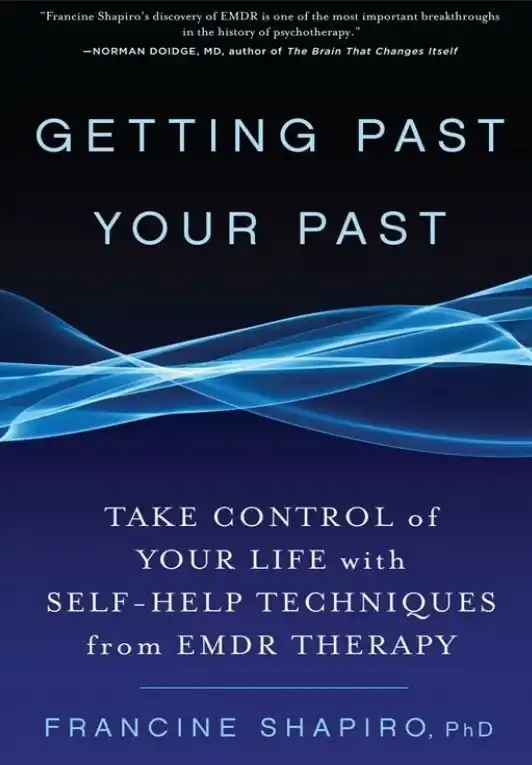
In Getting Past Your Past , Dr. Francine Shapiro explains how unresolved trauma shapes our lives and offers practical tools—based on EMDR therapy—to heal emotional wounds. This book helps readers understand how the brain stores painful memories and how to reprocess them, so they no longer control your thoughts, emotions, or behavior. A must-read for anyone seeking emotional freedom and lasting healing.
Audio Note Option Comming Soon...
🧠 Getting Past Your Past
By Francine Shapiro, with Amy Weintraub
📖 Overview
💔 Getting Past Your Past is a powerful and deeply insightful book by Dr. Francine Shapiro , the creator of EMDR (Eye Movement Desensitization and Reprocessing) therapy—a groundbreaking therapeutic approach that helps people heal from trauma and emotional pain.
📘 Co-written with journalist Amy Weintraub , this book is designed for everyday readers who want to understand how past experiences—especially painful or traumatic ones—continue to shape their emotions, behaviors, and relationships today.
💡 “You don’t have to be controlled by your past. You can rewrite your story.”
Whether you’ve experienced childhood neglect, abuse, loss, rejection, or any emotionally charged event, Getting Past Your Past offers practical tools and real-life examples to help you break free from old patterns and reclaim control over your life.
🔍 Core Message
The central idea of the book is:
Your brain stores every experience—and some of those memories are running your life without you realizing it.
Traumatic or emotionally intense memories get locked in the brain in a raw, unprocessed form. These memories can be triggered by present-day events, causing irrational reactions, anxiety, depression, or self-sabotage.
🌀 But with the right tools—like EMDR—you can reprocess these memories so they no longer hijack your mind and body.
🧩 Key Themes & Insights
Shapiro explains how the brain processes normal experiences versus traumatic ones.
🧠 In healthy processing:
⚠️ But during trauma:
📌 Important Insight: It’s not just major trauma—smaller wounds can also shape your inner world.
Many adult struggles stem from early experiences—even seemingly minor ones like criticism, teasing, or being ignored.
👶 Shapiro shows how:
💬 “Children may grow up—but their brains never forget how it felt.”
Have you ever wondered why you keep making the same mistakes or falling for the same type of person?
🌀 It’s because:
🧠 Important Lesson: Breaking free starts with awareness.
EMDR is a scientifically validated therapy that helps the brain process stuck memories.
🔄 It works by using bilateral stimulation —most commonly side-to-side eye movements—to activate the brain’s natural healing abilities.
🧠 Benefits:
🎯 EMDR has been shown effective for PTSD, anxiety, panic attacks, phobias, grief, and more.
Even if you’re not seeing an EMDR therapist, the book provides do-it-yourself tools based on EMDR principles.
🛠️ Techniques Include:
📝 These tools help you manage stress, change limiting beliefs, and regain emotional control.
One of the most empowering ideas in the book is that:
“You can change the way your brain interprets your past.”
🧠 Through guided exercises, Shapiro helps readers identify:
💬 “You are not broken. You were simply doing the best you could with what you had.”
Throughout the book, Shapiro shares real case studies of people who transformed their lives through EMDR.
These include:
🌟 These stories show that healing is possible—even for deep wounds.
Shapiro encourages readers to become active participants in their healing journey.
✅ Key Takeaways:
🧠 “Once you understand how your brain works, you can start leading it—instead of letting it lead you.”
📌 Final Thoughts: Heal Your Past to Live Your Present Fully
Getting Past Your Past is more than a self-help book—it’s a guide to neurological healing and emotional transformation .
As Dr. Shapiro writes:
“You can’t change the past—but you can change how it affects you.”
This book gives you the tools to do exactly that.
If you’ve ever struggled with anxiety, insecurity, fear, or confusion about why you react the way you do—this book will help you make sense of it all—and move forward.